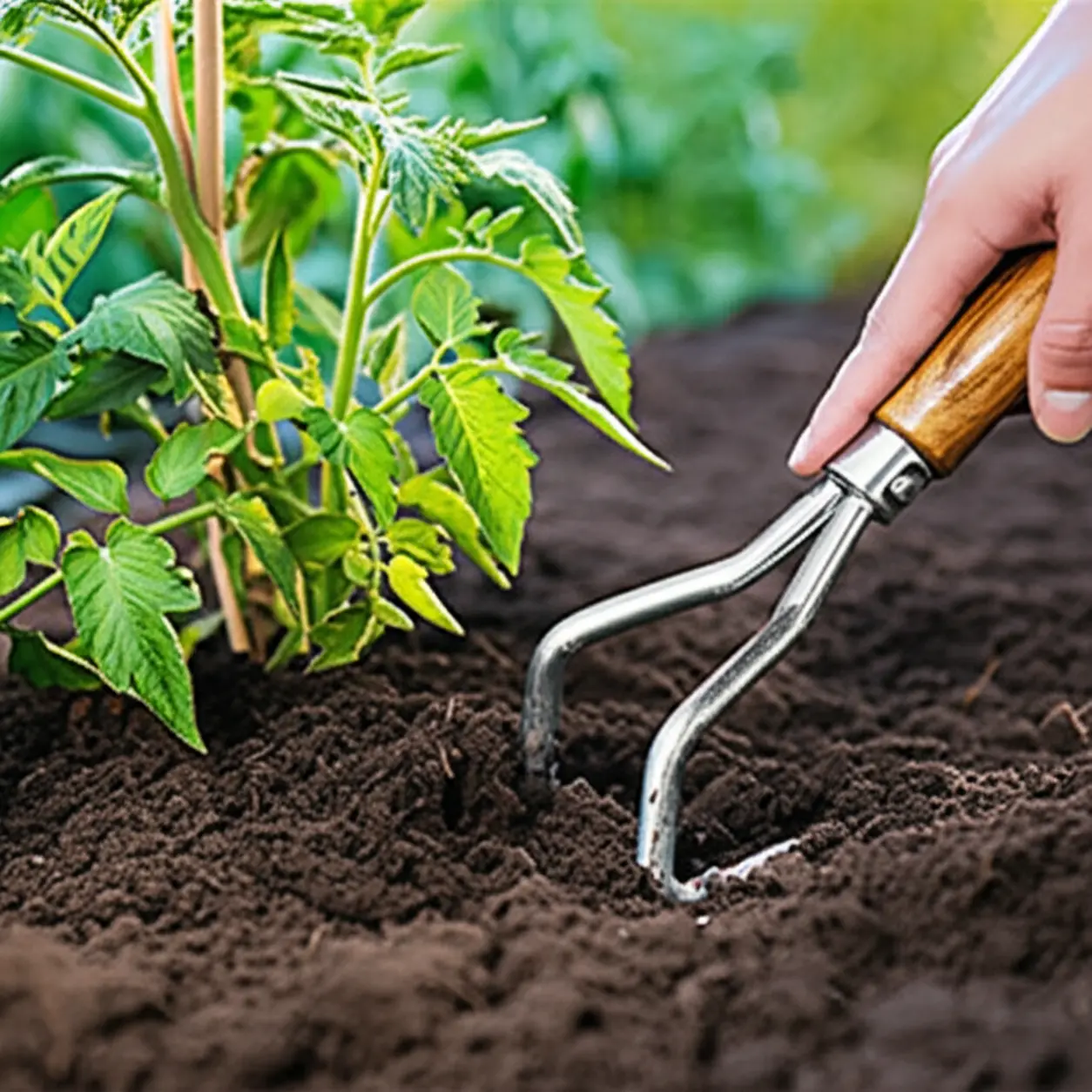1. The Core Principle: Understanding Soil Aeration
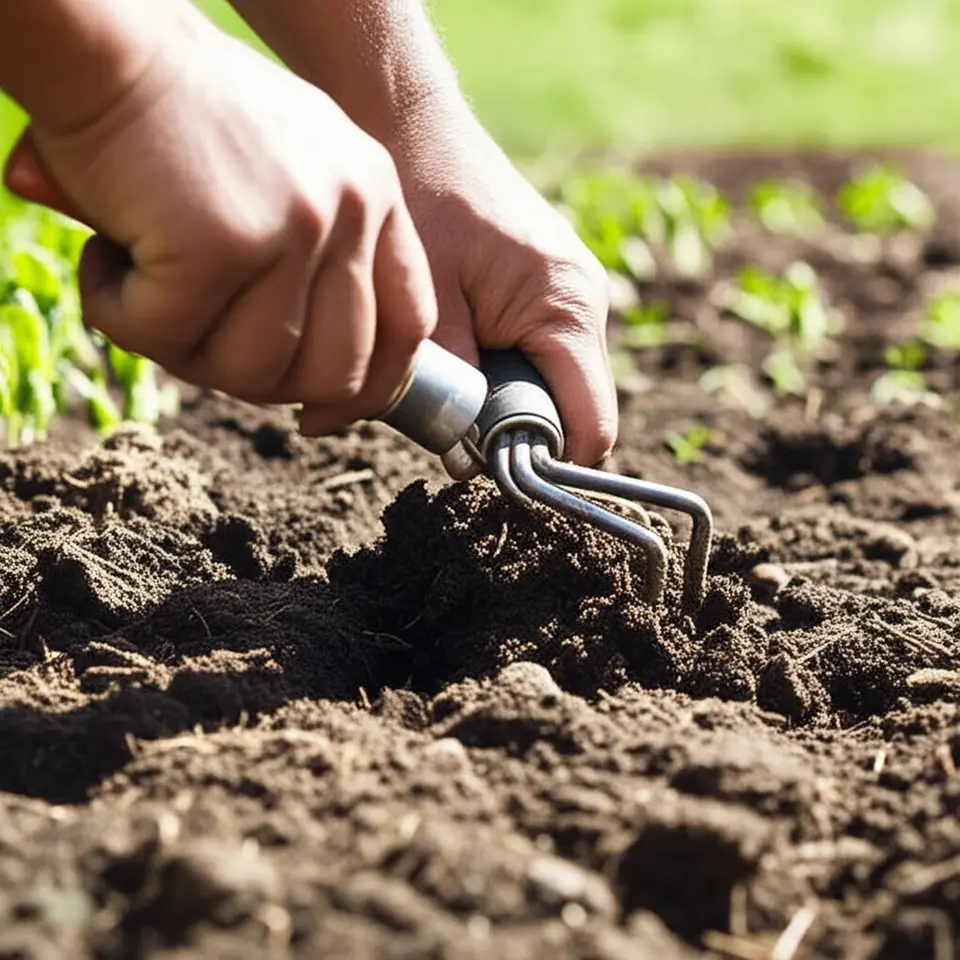 Thank you for reading this post, don't forget to subscribe!
Thank you for reading this post, don't forget to subscribe!
2. The Hand Cultivator’s Role in Soil Aeration
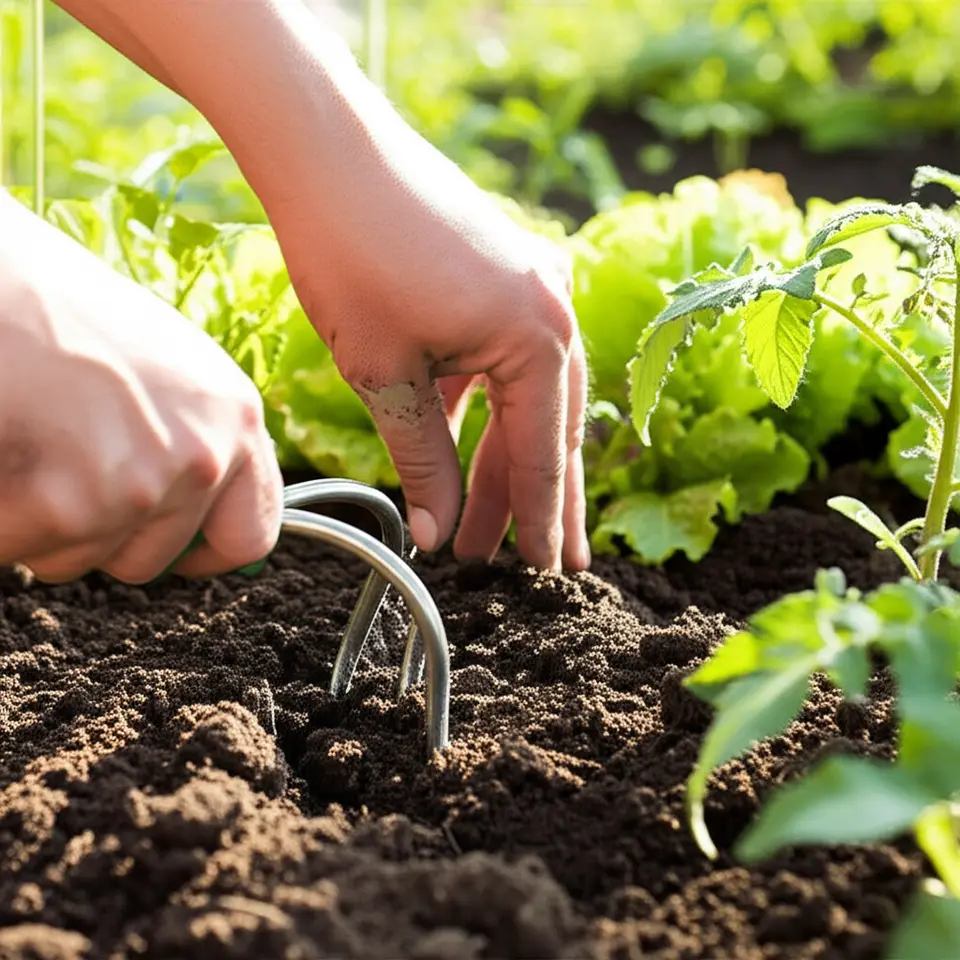
3. Agronomic Benefits of Manual Aeration with a Hand Cultivator
Manual aeration with a hand cultivator directly impacts plant health from the ground up. By breaking apart compacted soil, you introduce vital oxygen channels. This process, known as hand cultivator soil aeration, fuels robust root respiration and encourages deeper, more extensive root systems. Think of it as allowing your plants to breathe more freely. This improved structure also enhances water infiltration and nutrient absorption. Instead of pooling on the surface or running off, water and dissolved nutrients can easily reach the root zone where they are most needed.
Furthermore, this practice physically breaks up surface crusting, a common issue in clay heavy soils, which in turn boosts seed germination rates. The benefits extend to the microbial level as well. Oxygen rich environments stimulate the activity of beneficial aerobic microorganisms. These microbes are essential workers in your garden, breaking down organic matter and making nutrients available to your plants. Using one of the best hand cultivators for this task in 2025 ensures you are effectively creating a healthier, more productive soil environment for your garden to thrive.
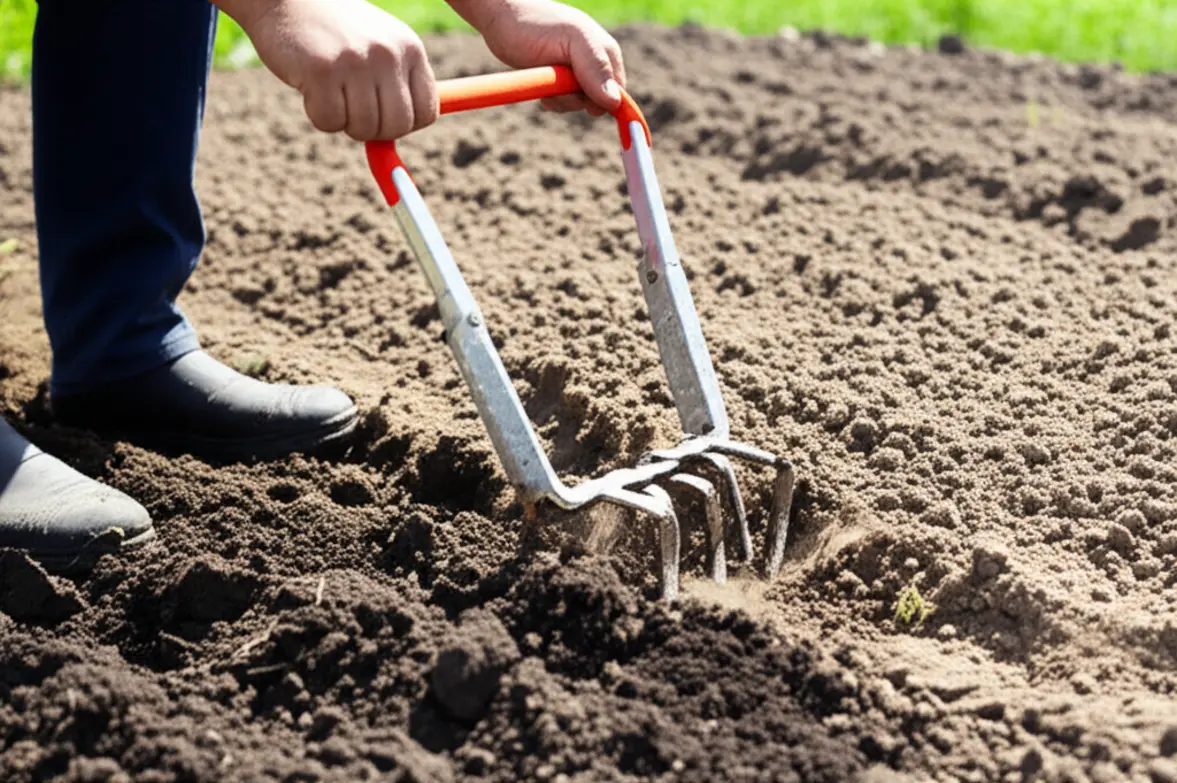
4. A Step-by-Step Protocol for Effective Soil Aeration
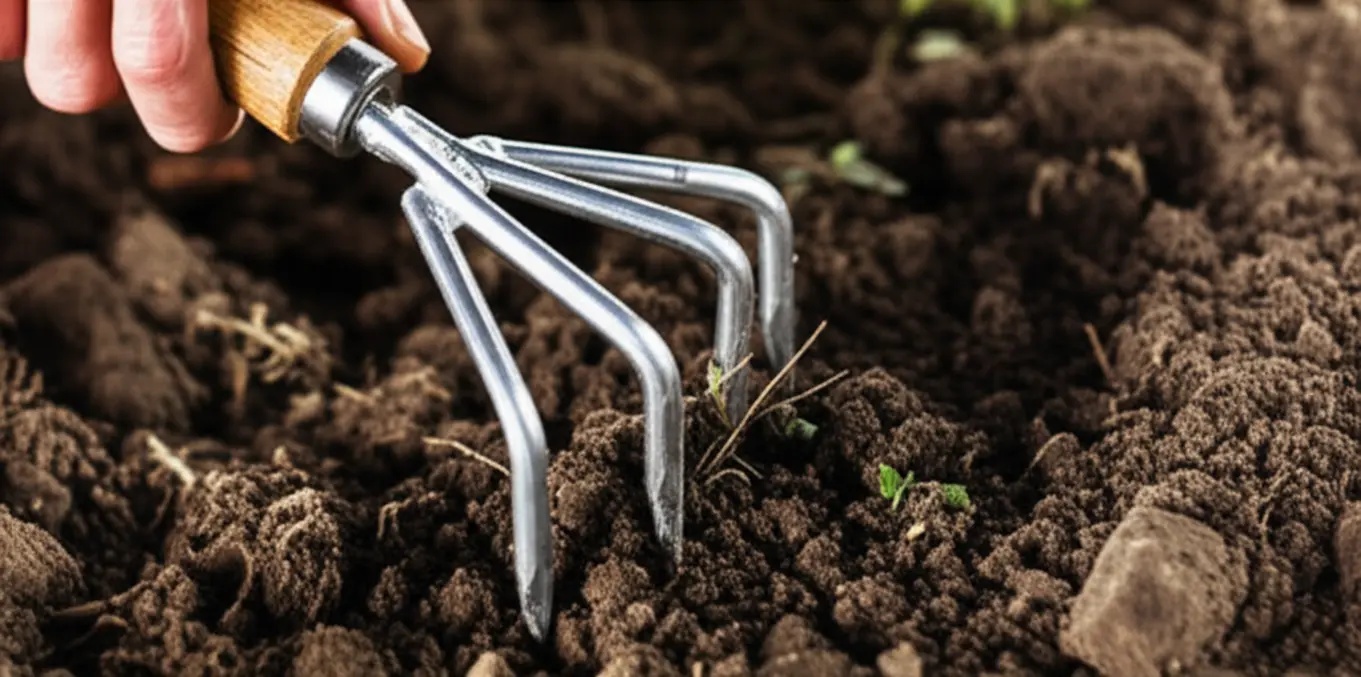
5. Selecting the Appropriate Tool: An Analysis of Hand Cultivators
Choosing the right tool is critical for effective hand cultivator soil aeration. The design of the cultivator directly impacts its performance in your specific garden conditions. For dense, clay-like soils, a cultivator with sturdy, straight, or pointed tines is superior, as it can penetrate and break up compacted ground with less effort. In contrast, for looser, loamier, or sandy soils, a tool with curved or rounded tines is ideal for weeding and aerating without excessively disturbing the soil structure and nearby plant roots. The spacing between tines also matters; narrower spacing is better for fine tilling, while wider spacing helps clear larger debris and break up bigger clods.
When evaluating long-term value, consider these key features updated for 2025:
* Material: Stainless steel tines offer excellent rust resistance, making them a low-maintenance choice for gardeners in damp climates. Carbon steel, on the other hand, is often stronger and can be sharpened to a finer edge, but it requires diligent cleaning to prevent corrosion.
* Ergonomics: A well-designed handle makes a significant difference in user comfort and efficiency. Look for an ergonomic hand cultivator with features like a non-slip grip, a contoured shape that fits your hand, or a cushioned handle to absorb impact and reduce fatigue during extended use.

6. Maintenance for Tool Longevity and Performance
Proper care after each use is critical to keeping your hand cultivator in peak condition for years. A well-maintained tool not only lasts longer but also performs better, making tasks like hand cultivator soil aeration easier and more effective. Neglecting this simple routine can lead to rust, bent tines, and a compromised handle, diminishing the tool’s utility. Follow these straightforward steps updated for 2025 to ensure its longevity.
First, always remove caked-on soil and debris from the tines with a stiff brush or a putty knife after you finish your gardening. Rinse it with water and, most importantly, dry it completely with an old cloth to prevent rust. Second, periodically inspect the tines for any bending or dullness. Sharp tines are crucial for breaking up compacted soil efficiently. Finally, store the tool in a dry place like a shed or garage, away from the elements. For long-term storage, applying a thin coat of linseed oil or camellia oil to the metal parts provides an excellent protective barrier. This simple process is the foundation of good hand cultivator maintenance.
7. Frequently Asked Questions (FAQ)
– Can hand cultivation damage plant roots?
Yes, it is possible to damage roots with a hand cultivator, but it is entirely preventable with proper technique. The key to safe hand cultivator soil aeration is to work around the base of your plants, not directly over their primary root zone. Focus on breaking up the top 1-2 inches of soil to avoid disturbing the sensitive feeder roots that often lie just below the surface. For plants with known shallow root systems, such as hydrangeas or rhododendrons, exercise extra caution by cultivating further from the plant’s stem. This careful approach ensures your plants get the benefits of improved aeration without sustaining root damage.
– How does manual aeration compare to using a core aerator?
A hand cultivator and a core aerator are designed for different tasks and areas. Manual aeration with a hand cultivator is ideal for targeted, surface-level work in garden beds, raised planters, and around individual plants. It gently breaks up crusty topsoil. A core aerator, on the other hand, is a much more aggressive machine used for lawns. It works by pulling out deep plugs of soil to alleviate significant compaction across a large area of turf. You would use a hand cultivator for precise work in your flower or vegetable garden, not on your lawn.
– How often should I aerate my garden beds with a hand cultivator?
As of 2025, the recommended frequency depends on your soil type. For heavy clay soils that compact easily, aerating every 4-6 weeks during the growing season is beneficial. For sandy or loamy soils, 2-3 times per season is usually enough. The best approach is to observe the soil. If you see water pooling on the surface after rain or watering, it is a clear sign that the soil is compacted and needs aeration. Proper technique is essential for effective results, and learning how to use hand cultivator will help you maintain healthy, productive garden beds.

